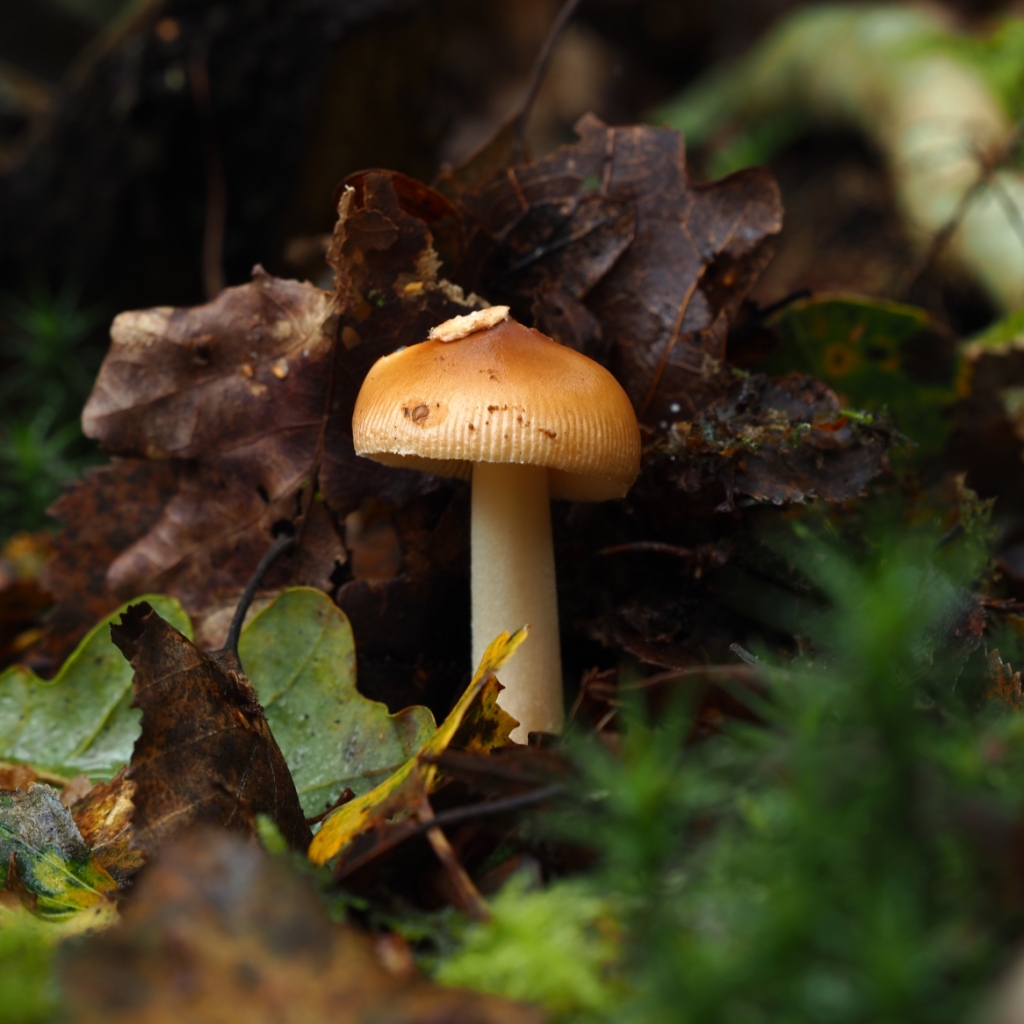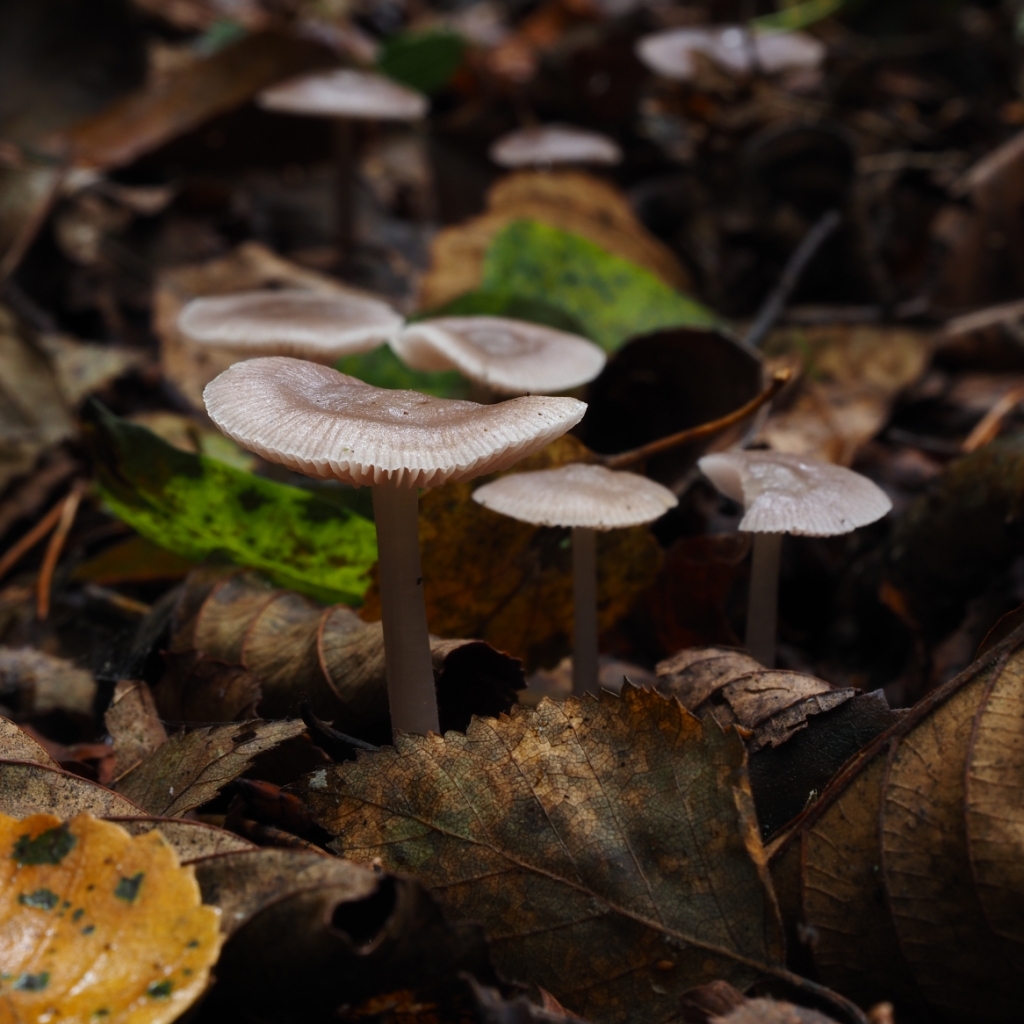The day after last week’s post, I headed back out to another local woodland to check up on the fungal situation. Building on the violet webcap theme, I was this time lured down an amethyst deceiver rabbit-hole. Thankfully, I was able to return from it.

I saw a tweet recently from the editor of the Inkcap Journal about how she could never find these mushrooms. The question was whether they are as bright as people say, or if that was deceptive. They are, of course, deceptive by name but also in their appearance.

I was scanning the path edges along a usual mushroom route I take through this woodland when I spotted a very small, dark mushroom under the birch and holly. It was almost black in the shade but on closer inspection it was one of perhaps 100 amethyst deceivers in the local leaf litter.

As I slowed down upon finding the mushroom, I began to see more and more. They were everywhere. I was careful not to step or kneel on them. I took some photos of them in varying states.

Herein lies this family’s deception – they are often confusing because they can look so different in anything but colour. Perhaps their name also derives from the fact they are hard to see.

These blogposts can also be deceptive. Though I have found things to photograph, we are nowhere near a mushroom peak. Things are not in full flow. The Sussex Weald’s woods look dry still, with heavy rain not yet enough to provide the water for full-on fruiting across the board. In other words, the mushrooms remain small and sparse, but there if you look. This brittlegill was exploding onto the scene like the shark from Jaws.

Something that can always be relied upon is a hard-wearing polypore. This fan of small brackets is the sort of thing you can find all year round.

This yellow stagshorn was climbing every mountain.

There were more of the typical mushrooms, but mostly in the shaded areas under holly or lower vegetation. This crew of bonnets were growing in their hundreds.

On the woodland floor I spotted some very small mushrooms with conical hats. These tips look a bit like the famous magic Psilocybe mushrooms. After a bit of research I decided that they are in fact peaked webcap.

You can forgive me for seeing their similarity for liberty cap, the magic mushroom. In this photo you can see a small amount of the webbing which gives this huge family of mushrooms its general name.

Some of the more summery mushrooms were there to be found. This included the undisputed king of looking-like-they-just-burst-through-the-door, tawny grisette.

Another amanita to be found was this blusher, I think. It is quite difficult sometimes to tell the difference between a couple of relatives in this group, including the panther cap and grey-spotted amanitas.

The pinkish-hue and appearance of the stipe was enough to suggest to me that it’s a blusher, rather than a grey-spotted amanita.

I like the felty-caps of these two friends down among the old holly leaves and sticks.

Before making my way back home I happened upon another gathering of bonnets, again under holly in very shady woodland. It’s where the moisture is and therefore where the magic happens.
If you can, make some time to get out there and find yourself some mushrooms. You won’t regret it.
Thanks for reading.
